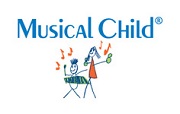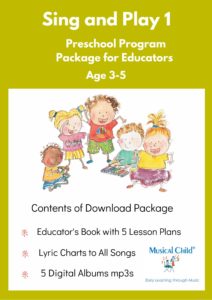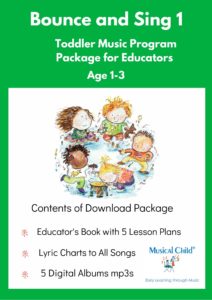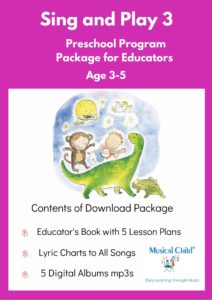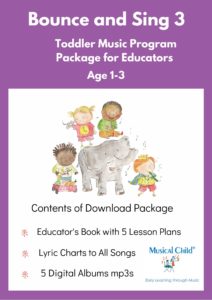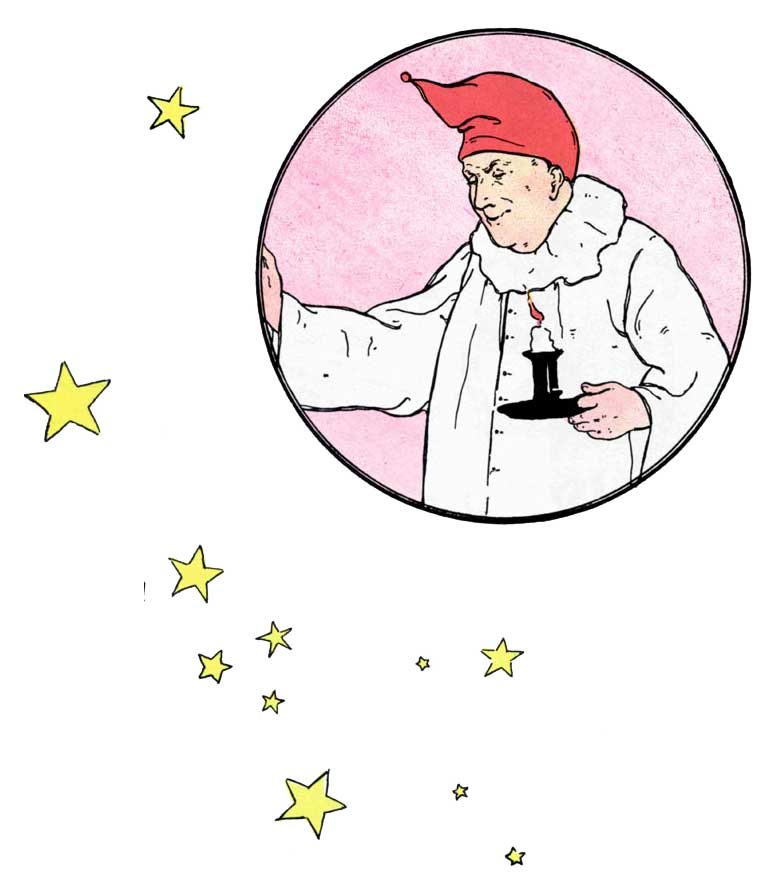
Rhyming nursery rhymes feed the child’s brain because brains love patterns. Rhymes make brains go PING! Rhymes feed the growth of neural networks. We now know that every child is born a musical child, hungry for musical experiences. What do children learn musically from rhyming nursery rhymes? Here are 6 ways children are super-learners when you sing them their nursery rhymes on a regular basis.
1. Melody in rhyming nursery rhymes makes learning easier
Because young children love repetition, it is easy to teach a specific melody through this easy-to-find resource, the rhyming nursery rhyme collection. A melody you repeat to your children often is easily memorised. Below is a delightful melody in Little Jack Horner. We find that same melody used for Little Miss Muffet.
2. Rhythm plus rhyme carries immense power
The rhythm of spoken English is formalised within the spoken or sung rhyming nursery rhyme. When we repeat the lyrics again and again, over time it sets up a preference in the brain for these lilting patterns of sound. Listen to the strong rhythm in Cobbler Cobbler.
3. Phonological awareness gets deeper when we rhyme
Phonology is the study of the way words are made up of separate sounds. When we repeat vowels like the ‘oo’ sound with slight variations in front as in ‘shoe’ and ‘two’, it ‘sounds’ interesting to our brain. Delightful patterns like this drive the lyric forward and make us want to keep mouthing words. They give us a “mouth feel” to borrow a phrase from the popular TV cooking programs.
There is pleasure in the way the words sound in the cranial spaces. They feel good on the palate and trip lightly off the tongue. There is also enjoyment in the way the diaphragm pushes our breath over the vocal folds. There’s a lot of moving parts when we sing. Try singing Wee Willie Winkie and enjoy the sensations.
Little Jack Horner
Little Miss Muffett
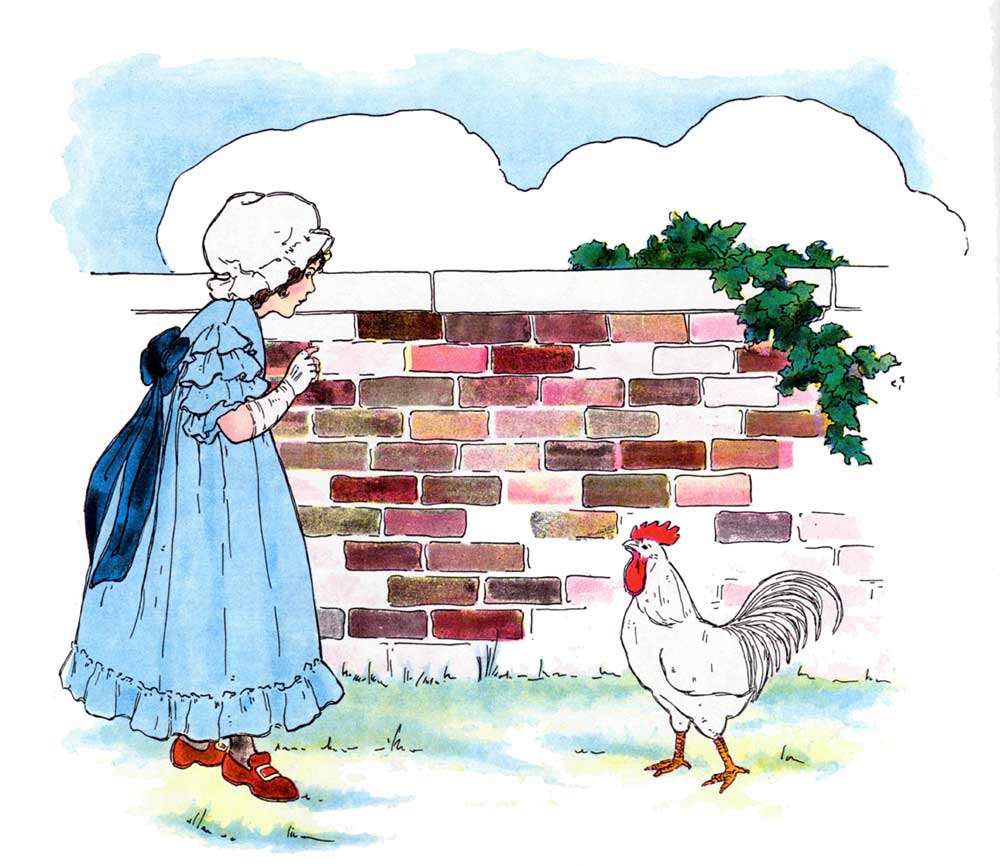
4. Rhyme helps drive the metre (aka timing)
Rhyming nursery rhymes teach Western music time signatures or metric patterns. Babies, toddlers and preschoolers learn timing by experiencing it in a pleasurable fashion. So, the child who is fortunate enough to learn to play an instrument in middle childhood already has a repertoire tucked into their memory. Here are two examples of what I mean.
Chook Chook is in four four time mimicking the staccato calls of a chicken.
Here We Go Round the Mulberry Bush is in six eight time encouraging a skipping, light-footed response.
Chook Chook
Here We Go Round the Mulberry Bush
5. Rhyme helps to shape the form (aka structure) — Another pattern
The spoken and sung versions of rhyming nursery rhymes have power because of their form or structure. Young children incidentally learn the basic forms that music takes with contrasting and repeated sections. In fact, according to neuroscientists such as Dr Daniel Levitin, the rhymes themselves wire up the children’s brains to search for and enjoy these forms in other poetry and songs later in life (Levitin 2008 p.32). In the song, I Had a Little Nut Tree, it is the ternary form that gives a “complete” feeling as the first and third sections are the same melody (ABA).
6. Rhyme drives improvisation (aka Improv) — Boundless creativity
Learning nursery rhymes in early childhood is a foundation stone for learning to sing, play instruments, move expressively, and improvise. We often see that in the unself-conscious three-year old dancing their way through the supermarket aisles, singing a stream of consciousness that sounds awfully like a nursery rhyme but isn’t. It’s something they’re making up “on the go”.
Regarding improvisation, Daniel Levitin talks about the cognitive faculty of “rearrangement: the ability to combine, recombine and impose hierarchical order on elements in the world” (Levitin 2008 p15). A child’s creativity knows no bounds and the musical material learned in the nursery rhymes is a large part of the “stuff” for combination and recombination in the child’s musical play. Nursery rhymes are great in themselves and are forever recyclable.
Want to know more?
See our Training page if you’d like to know more about how to incorporate nursery rhymes into your practice with babies, toddlers and preschoolers, or become a member of our Early Childhood Music Hub.
References
Little Jack Horner in Bounce and Sing 4, Part 20 Christmas Tree
Little Miss Muffett in Bounce and Sing 1, Part 1, We Play Music
Cobbler Cobbler in Bounce and Sing 2, Part 6, My Hands and Fingers
Wee Willie Winkie in Bounce and Sing 2, Part 8, In the Big Bed
Chook Chook in Bounce and Sing 2, Part 9, Baa Moo Oink
Here we Go Round the Mulberry Bush in Bounce and Sing 2, Part 10 Thunder Wind Rain
I Had a Little Nut Tree in Sing and play 2, Part 6, My Body
Levitin, Daniel J 2008 The World in Six Songs: How the Musical Brain Created Human Nature Dutton: New York
